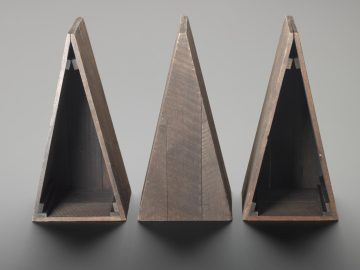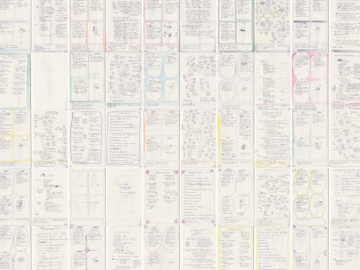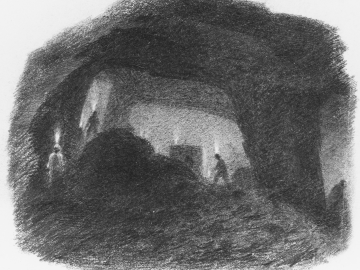The Birdman’s Wife
Melissa Ashley
Excerpt from The Birdman’s Wife, a historical novel about the life of zoological illustrator Elizabeth Gould, by Melissa Ashley (2016, Affirm Press)
While I was getting acquainted with my portraitist, John was preparing a presentation for the Zoological Society and needed a drawing of the white-fronted falcon, an Australian raptor, to illustrate his talk. The taxidermied mount on my desk bared its claws, moments from snatching the body of a small marsupial. I felt strangely attached to the specimen, which we had collected en route to Yarrundi. We had stopped for lunch, blankets were unrolled, the water boiled, and salted meat, hard biscuits and fresh apples from Sydney were being passed around. Then I saw a flare at the edge of my eye. I touched John’s elbow, and before there was time to regret, his hand grasped the stock of his musket. The falcon hovered above a grassy field, preparing to strike.
Usually when I joined John’s collecting expeditions, I was the last in the party to spot anything of note. I had been trained for close indoor work, controlled light and absolute stillness. But during our coach journey from Maitland to Dart Mouth, I became aware of the sharpening of my senses. I enjoyed the hazy play of light and shadow gathered around the edges of eucalypt leaves, the ashy corolla that shimmered in the afternoon or early morning, an effect of its oil-rich leaves. Somehow I managed to reach my own state of attentive awareness, conducive to spotting potential specimens in the wild. I was alert to the smallest of movements – a quiver at the tip of an ear of grass, a twirl of falling leaf, a flash behind a grouping of cloud, a bird-shaped object perched on a protuberant branch.
Without a whisper of fuss, John brought the falcon down. He showed it to me later, cotton dabbed on the shoulder wound. It had been a poor shot, the wing just grazed, the bird dying of fright soon after it fell. Benstead wrapped the body in flax and stowed it in one of the canisters he kept with him, sprinkling arsenic around the seal to keep the ants away. While I was glad to have added such a prize to our collection, I could not help but feel a terrible guilt at initiating the bird’s demise. With the preserved skin brought into my studio for a likeness, I was all too aware of my duty to make a faithful representation. We had taken its life, so I had best ensure that the exchange was not in vain, that at the very least the splendid animal would live in my drawing.
To help with colour selection, John had given me his form descriptions, written on a scrap of notepaper jammed under the mount: back and shoulders bluish horn; belly margined with buff; cere tinged green; irides sienna yellow; crown ash grey; mandible smoke grey. He added a note that if it were not so rare, the species would be ideal for training a lady falconer. His thought pleased rather than irked me, as when he included in his notes the taste of a particular animal’s flesh. Falco, Latin for sickle, referred to the shape of the family’s talons, with which it captured and killed its prey. Working with raptors, I had learned to recognise their feet – powerful, with long, thick claws. Instantly identifiable, too, was the reptilian skin of the legs, composed of a mosaic of tiny scales. Rather than work up the falcon’s proportions, I began my study by making a detail of the talon’s grip, taking care with my technique to record the long middle toe, deployed to keep a firm hold of dinner during the lengthy flight to its nest.
Although John intended the drawing initially for the gentlemen of the Zoological Society, I needed to create a pose that could be reused for a lithographic plate. We did not have the time to duplicate designs. It was important to keep in mind the necessities of zoological illustration, making sure that I always emphasised the distinguishing features to allow for precise identification.
The pose I wished to present the falcon in was yet to crystallise. In search of inspiration, I went to the bookshelf and scanned the spines of our collections of pictorial specimens. I removed Dr Latham’s volume of early colonial illustrations – copied, as was his habit while compiling the many editions of A General Synopsis of Birds, from the drawings of colonists from every walk of life: soldiers, convicts, surgeons and professional painters. As I opened the journal, a note drifted out, landing on the floor. It was an etching of a woman, her elbow resting on a table, a pencil in one hand, a piece of paper in the other. To her right was a white cockatoo, its feet grasping a perch. Her hair curled to her shoulders, framing a beautiful gown, cinched in at the waist with a low bodice. I turned the paper over and read the inscription: ‘S. Stone.’ It could be none other than the watercolour painter Sarah Stone, I realised. Miss Stone had illustrated parts of surgeon John White’s First Fleet Journal, one of my husband’s primary references, and during my apprenticeship in painting Australian species, she had often entered my thoughts. How had Miss Stone felt, being one of the first people from England to encounter the newly established penal colony’s natural treasures? What thoughts did she have, casting her eyes over those poorly preserved specimens: the black cockatoo, the rainbow lorikeet, the swift and king parrots? Miss Stone’s owlet nightjar and blue wren plates were as familiar to me as my own lithographs. I had passed many a pleasant hour poring over her compositions for clues to create my own perches and designs.
My discovery had me recall a portrait of the entomologist Maria Sibylla Merian on the frontispiece of her folio Metamorphosis Insectorum Suirnamensium. The portrait had been made later in life, her face hollowed with age. She was pictured with objects symbolising her achievements: a globe on a pile of books, two framed prints of shells and flowers, and a butterfly flying about a thick-leafed plant she had brought back from Suriname to Europe. She wore a corseted bodice and yards of impractically arranged fabric, a style typical of the era.
I thought of Mr Orleigh’s sketch. My predecessors were presented with authority – surely my own likeness warranted a reflection, however small, of my occupation as an artist who specialised in birds?
Latham’s illustrations, produced in his home by his untrained wife and daughters, showed the awkwardness of the amateur, making no impression on my imagination. I returned the volume to the shelf and indulged my weakness for myths and wives’ tales paging through Gesner’s almanac. Turning to the entry about raptors, I read that the species possessed the ability to rejuvenate. There was a story about an ageing falcon who placed herself in the light of the sun’s rays, waiting until her feathers caught fire. She then plunged into the ocean, causing her plumage to smoulder and blacken. After a time she rose from the water, clothed in bright new feathers and stronger than ever before.
Gesner’s tale brought me comfort. Despite my esteem for the purity of scientific observation, I had to confess that I was more readily enchanted by the beliefs of unenlightened men. The richness of the almanac’s collection of stories, symbols, emblems and recipes, all jumbled together, acted on my imagination like a door thrown open.
***
Mr Prince had delivered the specimen for my next drawing: a white-breasted sea eagle. Viewing Lear’s eagles and falcons equipped me with the confidence to translate a big mount into lines on my sketch paper.
‘The sea eagle glides like a large butterfly,’ read the note John had included. He had recorded a story from explorer Matthew Flinders of discovering two huge sea eagle nests, two feet tall and composed of enough branches and tree matter to fill a small cart. He had also included Flinders’s description of the disgorged balls of matter, a hard compact of the indigestible remains of the sea eagle’s prey. Having examined the pellets’ contents – the scaly feathers of penguins, seal hair, and the bones of small quadrupeds and birds – Flinders was able to deduce the species’ diet.
Holed up in my studio, I summoned the renewing powers of the eagle. I stroked its rough feet, identifying with its fabled strength. For the detail on the eagle’s legs, I selected lark quill, into which was fitted the narrowest grade of nib. Only a fraction of ink touched the paper, the concentration required rendering me temporarily blind, like Saint Lucy and Saint Alice during their raptures. According to my almanac, the mythical eagle was able to gaze at the sun without damaging its eyes. What irony that the creature possessed such powerful sight, yet the visual sensitivity required to render its features carried the risk of endangering my gift. Raptors were associated with feminine mysteries. A tribe of ancient Siberians carried the belief that laying eggs caused the female great pain. To ease her suffering, she kept a magical stone inside her nest, black with yellow flecks, like the field markings on Maria Sibylla Merian’s Suriname caterpillars. If a woman afflicted with dangerous pregnancies and miscarriages got hold of such a stone, her pain would be much diminished. I wondered if I would take this grace-giving amulet, promising a healthy babe, were it offered.
All I knew for certain was the craft I had trained myself in, the one skill I could predict. Outlining the sea eagle’s powerful shoulders, I recalled my portraitist’s face, as I had done so often during the busy season. I drew solace from the thought that while I worked up a sketch of the sea eagle, Mr Orleigh daubed away, putting in the repairs to my portrait to appease my husband. Applying water to my stretched paper, I imagined him delivering a viscous splatter to the palette and brush he had painted to signify my industry. I conjured his brow, puckered and creased with effort. I wished him well in the fine work of feathers.
As Lear drifted to mind, I exchanged the particulars of bird illustration for the panoramic scope of landscapes. Not without envy did I regard my friend’s new medium of oil, more forgiving of the mistakes and changes of heart than water, which was mine. Lear’s paintings were layered – deceptive even – absorbing and throwing out light, capturing the moods of the sky, the tumbling ruins of Rome.
I wondered if Lear and Mr Orleigh felt as I did about their roles as artists. Ultimately, the recognition I received could not matter. For it was in the work I completed each day that I found meaning. Drawing was my central preoccupation; perfecting my designs directed the compass of my hours. Pencils, my sloped desk, a study skin, its eyes replaced by cotton wool, were all the materials I required. The plumage brushed and set in place, I flipped the specimen onto its back and sketched the feet, imagining the creature flitting about, incubating eggs, defending territory. Later, as I grew accustomed to my subject’s morphology and was ready to experiment with composition, I mused on other thoughts. My mind drifted. For a time I was so taken by the work of looking – of switching my eyes from the materiality of the bill to the intricacy of the cere – little else existed. It was a kind of marvelling, because in trying to replicate a bird’s form with my brush, I came to admire and to know it. I painted and I studied and, in this constant striving, became me.


